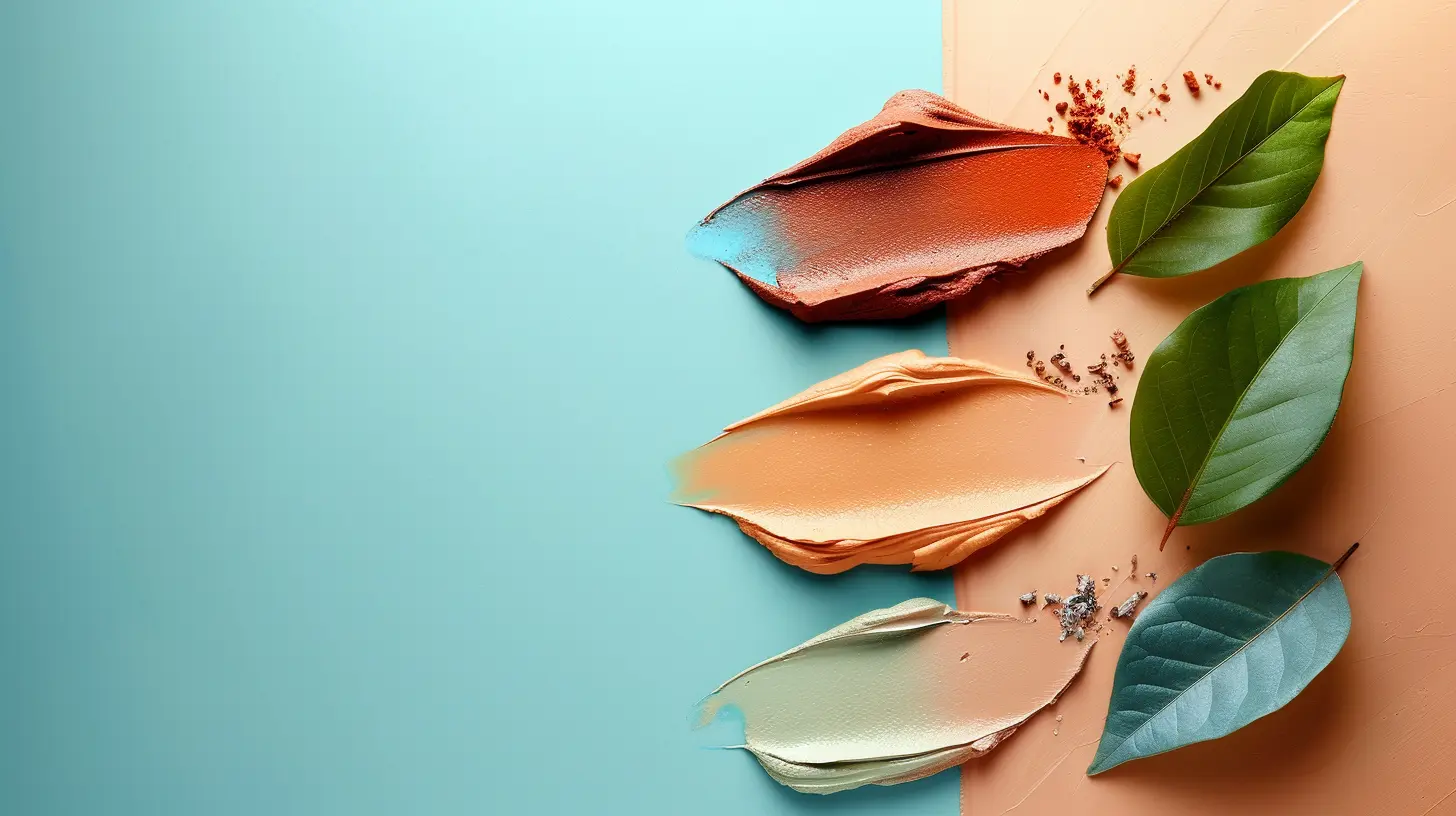The Importance of Patch-Testing New Skincare Products
18 January 2025
When it comes to skincare, there’s always that rush of excitement when you get your hands on a new product. Whether it’s that trending serum you saw on TikTok or a fancy moisturizer your favorite influencer swears by, trying out something new can fill you with hope for glowing, flawless skin. But, before you slather it all over your face, let me ask: have you patch-tested it yet? If the answer is no, we need to talk.
Patch-testing is not just an extra step in your routine—it’s a must-do for anyone who cares about their skin’s health. Let’s face it, your skin is unique—what works wonders for your bestie might leave you dealing with redness, itchiness, or a full-blown breakout. So, let’s dive into why patch-testing matters and how to do it like a pro.
What Is Patch-Testing?
First things first: what even is patch-testing? Think of it as a dress rehearsal for your skin. It’s a way to test a new skincare product on a small area of your skin before committing to applying it all over your face or body. This can help you identify if your skin will have an allergic reaction, irritation, or any other negative response to a product’s ingredients.Sounds simple, right? Yet, so many of us skip this step. Why? Maybe we’re impatient (guilty as charged), or maybe we don’t realize just how important it is. Either way, patch-testing can save your skin from a lot of heartache—and trust me, your skin will thank you later.
Why Do You Need to Patch-Test?
1. Skin Sensitivity Is Real
Did you know that the skin is your body’s largest organ? Crazy, huh? And just like any organ, it can be sensitive, finicky, and unpredictable. Even if you think you’ve got skin made of steel, it only takes one wrong ingredient to throw everything out of whack. Ingredients like fragrances, essential oils, or preservatives can often trigger irritation or allergic reactions, even in products labeled “natural” or “hypoallergenic.”Imagine slathering a new cream on your face only to wake up with red, blotchy skin or an itchy rash. Yikes! This is why patch-testing is so crucial. It lets you know beforehand if your skin is going to play nice with a new product.
2. Avoid Full-Face Disasters
Let’s be honest—no one wants to deal with a full-face breakout or rash, especially when it’s preventable. Without patch-testing, you’re basically playing Russian Roulette with your skin. Sure, there’s a chance the new product will work great, but there’s also a chance it won’t. And do you really want to take that risk? Didn’t think so.Patch-testing allows you to control the situation. If a product doesn’t agree with your skin, the reaction will be limited to a small area instead of your entire face. Less damage, less drama.
3. Every Skin Type Is Unique
Here’s the thing: no two people’s skin is exactly alike. Even if you share the same skin type (oily, dry, combo, or sensitive) as someone else, your skin’s needs and tolerances can differ. That’s partly because of your skin barrier, which acts like a personal bouncer for your skin. If your barrier is compromised or you have conditions like eczema or rosacea, you’re likely more prone to irritation.Patch-testing gives you a chance to figure out if a product is compatible with your unique skin. It’s like dating—you have to test the waters before going all in.
How to Properly Patch-Test a Skincare Product
Now that we’ve established why patch-testing is essential, let’s get into the “how.” Spoiler alert: it’s super easy and won’t take much of your time.Step 1: Pick Your Spot
You’ll want to test the product on a small, inconspicuous area of your skin. Some good spots to try are:- The inside of your wrist
- Behind your ear
- The crook of your elbow
Why these areas? They’re sensitive, just like your face, and will give you a good sense of how your skin might react.
Step 2: Apply a Small Amount
Take a tiny amount of the product—just a dab will do—and apply it to the chosen test area. Don’t slather it on; remember, we’re going for subtle here.Step 3: Wait It Out
Patience is key, my friend! Leave the product on for at least 24 hours. For some people, reactions might take longer to appear, so if you can stretch it to 48 hours, even better. During this time, keep an eye on the test area.Look out for:
- Redness
- Itching
- Swelling
- Dryness
- Burning or stinging sensations
If you notice any of these symptoms, it’s a no-go for that product.
Step 4: Assess and Decide
If the test area looks and feels fine after 24-48 hours, congrats! You can go ahead and use the product on a larger area. But, if there’s any form of irritation, it’s best to steer clear of that product. Your skin’s health is more important than trying to make something work when it clearly doesn’t.
Which Products Should You Always Patch-Test?
Not sure which products are worth patch-testing? While you could argue for testing everything, here are some that absolutely need it:- Chemical Exfoliants (like AHAs, BHAs, and retinols): These can be harsh and have a higher risk of causing irritation.
- New Active Ingredients: If you’re introducing ingredients like Vitamin C, hyaluronic acid, or niacinamide for the first time, always test them first!
- Fragranced Products: Fragrance is a common irritant, especially for sensitive skin.
- Sunscreens: Yes, even sunscreen. Some formulations can cause unexpected reactions.
Common Myths About Patch-Testing
Let’s clear up a few misconceptions, shall we?Myth 1: "I Don’t Need to Patch-Test If the Product Is Natural"
Sorry, but natural doesn’t automatically mean safe. Essential oils, for instance, are natural but can be super irritating to some people.Myth 2: "Patch-Testing Takes Too Long"
Sure, you’ll need to wait 24-48 hours, but that’s a small price to pay compared to weeks of recovering from an allergic reaction.Myth 3: "I’ve Used Similar Products Before, So I’ll Be Fine"
Not necessarily. Different brands and formulations can contain varying ingredients. Always test, even if the product seems familiar.What to Do If You Have a Reaction
So, let’s say you did a patch test, and your skin didn’t like what it saw. What next?1. Stop Using the Product Immediately: This should go without saying, but don’t try to “push through” the irritation—it’ll only make things worse.
2. Soothe Your Skin: Use gentle, fragrance-free products to calm the area. Aloe vera gel or a light hydrocortisone cream can help.
3. Consult a Dermatologist: If the reaction is severe or doesn’t go away after a few days, it’s time to get professional advice.
Final Thoughts: Patch-Test Like a Pro
At the end of the day, patch-testing is a small step that can save you from big skin problems. Think of it as your insurance policy for healthy, happy skin. It’s quick, easy, and worth every second of your time.So, the next time you’re tempted to skip patch-testing, remember: your skin deserves the extra care. After all, you wouldn’t buy a car without a test drive, right? Treat your skincare products the same way.
all images in this post were generated using AI tools
Category:
Skin CareAuthor:

Angelo McGillivray
Discussion
rate this article
12 comments
Cynthia Rodriguez
Ah, yes, because who wouldn’t want to turn their face into a science experiment? Patch-testing—so thrilling, it’s practically a rollercoaster ride for your skin! Buckle up and grab those Band-Aids!
March 24, 2025 at 6:03 PM

Angelo McGillivray
Haha, I appreciate your humor! Patch testing may seem tedious, but it’s essential for healthy skin. Better safe than sorry!
Micah Tucker
Essential step to avoid reactions; skin health matters!
February 10, 2025 at 3:51 PM

Angelo McGillivray
Absolutely! Patch testing is crucial for maintaining skin health and preventing adverse reactions. Thank you for your insight!
Caden Matthews
Patch-test: your skin's way of saying 'thanks!'
February 6, 2025 at 3:34 AM

Angelo McGillivray
Thank you! Patch testing is indeed a crucial step to ensure our skin stays happy and healthy.
Kismet Peterson
Patch-testing: because your face deserves a trial run, not a dramatic reality show!
January 28, 2025 at 5:53 AM

Angelo McGillivray
Exactly! Patch testing helps ensure your skin has a smooth debut with new products, avoiding unexpected drama.
Freya Oliver
Patch-testing is essential for preventing adverse reactions, ensuring skin compatibility, and promoting overall skin health and safety.
January 26, 2025 at 5:14 AM

Angelo McGillivray
Thank you for highlighting the importance of patch testing! It truly is crucial for safeguarding skin health and preventing unwanted reactions.
Flint Turner
Essential advice for healthy skin!
January 22, 2025 at 5:30 PM

Angelo McGillivray
Thank you! Patch testing is crucial for avoiding reactions and ensuring healthy skin.
Bryce McEachern
Skipping patch tests? That's like diving into a pool without checking the water first!
January 22, 2025 at 3:27 AM

Angelo McGillivray
Absolutely! Just like testing the water ensures safety, patch testing protects your skin from potential reactions. Always prioritize your skin's health!
Ainsley McRae
Oh, of course! Why would anyone want to avoid turning their face into a science experiment? Patch-testing is so overrated—who needs smooth skin when you can sport a lovely red rash instead? Clearly, living on the edge is the new skincare trend!
January 21, 2025 at 3:38 AM

Angelo McGillivray
Absolutely! Prioritizing skin health is key—patch testing helps prevent those unwanted experiments and keeps your skin smooth and happy.
Jacqueline Hayes
Essential for skin safety!
January 20, 2025 at 3:54 AM

Angelo McGillivray
Absolutely! Patch testing is key to preventing adverse reactions and ensuring skin safety.
Rachael Newman
Patch-test today for happy skin tomorrow!
January 19, 2025 at 5:30 PM

Angelo McGillivray
Absolutely! Patch testing is key to ensuring your skin stays happy and healthy. Always prioritize your skin's safety!
Aisha Cooper
Your skin deserves gentle care; patch-test for peace.
January 18, 2025 at 5:40 PM

Angelo McGillivray
Thank you for highlighting the importance of gentle care and patch testing! It's essential for ensuring our skin stays healthy and safe.
Bradley Jacobs
Patch-testing isn’t just a precaution; it’s your skin’s insurance policy. In a world of endless products, a simple test can save you from irritation and allergy woes. Remember, the only surprise your skin should encounter is how radiant it can look—without the red flags!
January 18, 2025 at 4:18 AM

Angelo McGillivray
Absolutely! Patch testing is crucial for protecting your skin and ensuring your new products work harmoniously. It's a small step that pays off big in comfort and radiance!
MORE POSTS

Why You Should Make Rest Days a Part of Your Weight Maintenance Plan

The Role of Gut Health in Achieving Healthy Skin

Healthy Longevity: Tips for Aging Gracefully

Exploring the Benefits of Hydrotherapy for Chronic Pain Management

How to Sleep Better with a Partner Who Snores

Long-Distance Running vs Sprinting: Which Cardio is Best?

The Best Skincare Tips for Those with Combination Skin

How to Create a Personalized Pain Management Plan